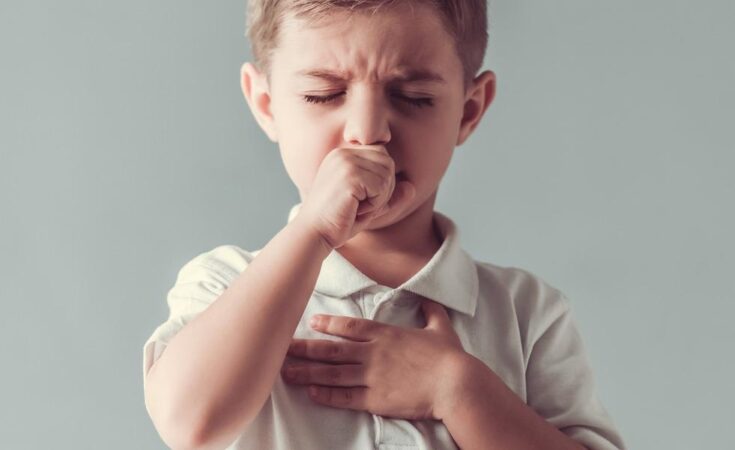A recent Pediatrics study assesses the causative relationship between the severe acute respiratory syndrome coronavirus 2 (SARS-CoV-2) infection and croup or “barking cough” in children.
Study: COVID-19–Associated Croup in Children. Image Credit: VGstockstudio / Shutterstock.com
Coronaviruses and croup
Throughout the entire duration of the coronavirus disease 2019 (COVID-19) pandemic, the causative SARS-CoV-2 has evolved. The effects of SARS-CoV-2 infection in children have also changed with different variants, with early variants primarily affecting the lower respiratory system. Comparatively, the SARS-CoV-2 Omicron variant prefers the upper respiratory tract.
As compared to adults, the upper respiratory tract is relatively smaller in children. As a result, children often present severe clinical symptoms of laryngotracheobronchitis or croup. Croup causes a sudden onset “barking cough” and breathing difficulties due to inflammation of the airways.
Endemic coronaviruses are known to cause croup; however, little is known about the association between SARS-CoV-2 infection and croup. SARS-CoV-2 infection may cause croup like other coronaviruses or croup may arise due to concomitant infection with other viruses.
Incidence and clinical characteristics of croup
The current retrospective study analyzes the incidence and clinical characteristics of croup in children with SARS-CoV-2 infection. This study was conducted using medical record data from a freestanding children’s hospital in Boston, Massachusetts. Clinical characteristics and viral testing data were obtained between March 1, 2020, and January 15, 2022.
Children diagnosed with COVID-19 as detected by a positive reverse-transcription polymerase chain reaction (RT-PCR) test and laryngotracheitis were included in this study. Only children treated in the emergency department and those requiring hospitalization were included.
The data were divided into the Omicron period and the pre-Omicron period. The Omicron period was defined as the period starting on December 4, 2021, which is when the first case of the Omicron variant was documented in Massachusetts.
COVID-19-associated croup
Seventy-five children who tested positive for COVID-19 were diagnosed with croup between March 1, 2020, and January 15, 2022. Of these 75 patients, 81% were reported in the Omicron period. The median weekly cases in the Omicron period were significantly higher than those in the pre-Omicron period.
About 72% of the children were boys. Furthermore, 88% of the children were treated in the emergency department.
Except for one, all children tested negative for other viral infections. This one patient had a rhinovirus infection.
About 97% of patients received dexamethasone for their treatment. All hospitalized patients received racemic epinephrine; however, only 25% of patients treated in the emergency department received this drug.
For all hospitalized patients, the median length of hospitalization was 1.7 days, the median number of dexamethasone doses was six, and racemic epinephrine doses were eight. Four patients required intensive care and one required oxygen and continuous positive airway pressure. None of the patients required ventilation or died.
Conclusions
The incidence of croup along with a concomitant SARS-CoV-2 infection sharply increased in December 2021, coinciding with the advent of the Omicron variant. Other sharp increases in the incidence of COVID-19 did not correlate with an increased incidence of croup.
An observation of the rates of hospitalization and redosing of croup-directed therapies indicates that SARS-CoV-2 infection may result in a more severe phenotype as compared to other viral infections. Thus, according to this study, the SARS-CoV-2 Omicron variant appears to cause croup in children.
Limitations of the study
The current analysis included data from a single hospital. Therefore, the sample size is small and the conclusions drawn from this study may not be applicable to a larger population. However, this is the first and largest study on COVID-19-associated croup to date.
The current study did not include viral genotyping; therefore, the SARS-CoV-2 variant infecting children was not identified by genotyping. However, during the “Omicron period,” the Omicron variant was the most dominant SARS-CoV-2 variant and rapidly replaced other variants, thus eliminating the possibility that other strains were in local circulation.
Since this study did not employ comprehensive viral testing, the possibility of coinfection with other viruses cannot be denied.
Implications
SARS-CoV-2 has presented dynamic and unique pathogenicity, infectivity, and clinical manifestations during the COVID-19 pandemic.
Croup appears to be another such novel clinical presentation. Future studies should focus on characterizing the mechanisms of COVID-19-associated croup.
The differences in clinical presentations of COVID-19-associated croup and other virus-associated croup should be assessed. These studies will help inform appropriate management strategies for COVID-19-associated croup in children.
Journal reference:
- Brewster, R. C. L., Parsons, C., Laird-Gion, J., et al. (2022) COVID-19–Associated Croup in Children. Pediatrics. doi:10.1542/peds.2022-056492.



































